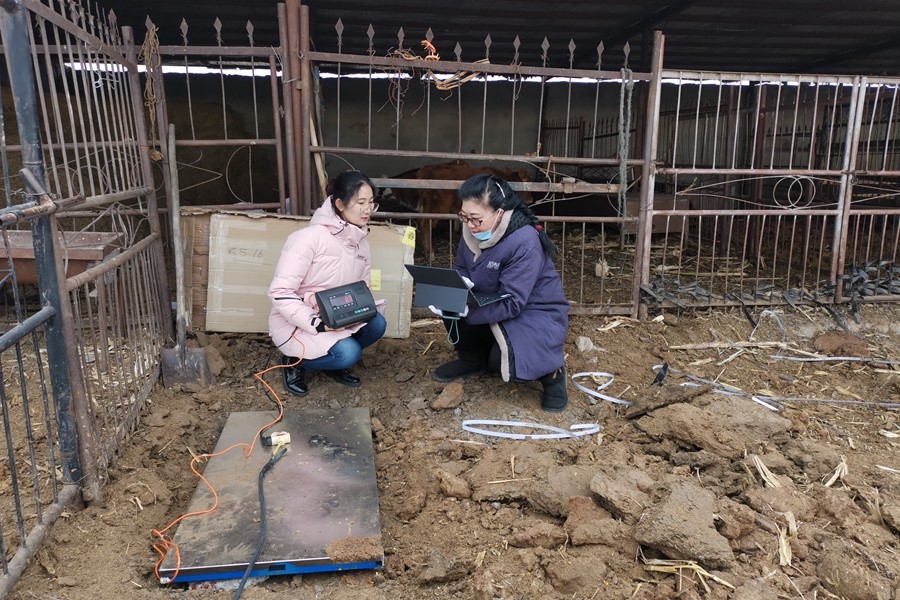Chinese universities contribute to rural vitalization strategy
Chinese colleges and universities, including those under the administration of the Ministry of Education (MOE), have made great efforts in assisting poverty alleviation and achieved fruitful results in advancing rural vitalization, a major task in realizing the great rejuvenation of the Chinese nation.
In 2012, 44 universities under the administration of the MOE paired up with 44 national-level poverty-stricken counties, and 11 joined a special poverty alleviation program in southwest Yunnan province.
Six years later, the ministry launched an action plan which involved 20 more universities under its direct administration in pair assistance programs for poverty alleviation.
University of Electronic Science and Technology of China has built an intelligent animal husbandry system for Tashan village, southwest China's Guizhou province, which standardizes cattle and chicken breeding through a visualization system.
Xi'an Jiaotong University invested over 2 million yuan ($283,126) in developing a health management system to strengthen the respiratory and critical care medicine department of the county-level hospital in Shidian county, southwest China's Yunnan province.
In Funan county, east China's Anhui province, Tongji University built a biogas production base that turns organic waste into energy. The base has been recommended nationwide by relevant authorities as an example of renewable energy making.
"Over the past decade, universities have invested and introduced more than 4.43 billion yuan to poverty alleviation programs. They purchased and helped impoverished regions sell 4.4 billion yuan of agricultural products and introduced 663 enterprises to these regions with an actual investment of 15.16 billion yuan," said Liu Changya, director-general of the Department of Development Planning under the MOE.
Fully exploiting their advantages of disciplines, technology and human resource, these universities have gradually developed a characteristic path for poverty alleviation with their features that meets the demand of impoverished regions, Liu added.

Students majoring in plant protection from Zhejiang Agriculture and Forestry University join a field trip with their teachers to a farm in Lin'an, east China's Zhejiang province, to offer technical guidance and products of pest control for local fruit farmers, June 30, 2021. (Photo from Zhejiang Agriculture and Forestry University)
Universities have worked to enhance education in impoverished regions through both facility and capacity building. They donated materials and offered aid education, training sessions and partner assistance to these regions. The training sessions have been joined 116,400 times by teachers in impoverished regions over the past decade, promoting the quality of local education.
In terms of industrial development, universities have made development plans, facilitated the commercialization of scientific results and adopted many other measures to help farmers better the varieties and quality of crops. Over the past 10 years, they have trained 777,600 grass-root cadres and technicians, planned 1,352 assistance programs and implemented 1,949 scientific projects.
To expand the healthcare service capability of impoverished regions, these universities sent doctors and medical equipment, trained local medical workers and launched healthcare publicity activities. Thanks to the assistance, a number of impoverished counties now have their first third-grade hospitals, which rank at the top of China's three-tier hospital grading system.
Universities have also mobilized all available resources to further expand the sales channel of agricultural products for impoverished regions. They set up "make-to-order" production bases, purchased farm produce from impoverished regions, and helped these regions sell agricultural products through livestreaming commerce.
Such a strong synergy comes from efficient cooperation mechanisms. According to Liu, relevant parties have set up assistance alliances, which are joined by 131 universities under the administration of the MOE and provincial governments as well as enterprises, to further promote resource sharing and match universities' capabilities to the demand of impoverished regions.
Thirty-seven universities under the administration of the MOE joined the discipline construction of 14 universities jointly built by the MOE and provincial governments, which effectively improved the operation of the latter and demonstrated the catalytic role of poverty alleviation and rural vitalization.

Professor Yu Yinhui with the College of Communication Engineering, Jilin University employs 5G and Internet of Things technologies in an agricultural pair assistance program in Linhai village, Tongyu county, Baicheng, northeast China's Jilin province, November 2021. (Photo from Jilin University)
Since the implementation of the 2018 action plan, universities have given full play to their advantages in sci-tech innovation and achieved remarkable progress in assistance.
According to statistics, over 18,000 applicable agricultural techniques have been commercialized over the past five years, generating revenue of more than 71 billion yuan, which has significantly promoted the modernization of agriculture and rural areas.
Besides, Chinese universities have won eight science awards, 20 technical invention awards and 46 sci-tech progress awards at the national level in the field of agriculture and rural areas.
With regard to frontier technologies, a research team from Tianjin University has fundamentally tackled the problem of the limited source of pesticide raw materials and excessive consumption of resources by realizing efficient synthesis of biopesticide varieties in chassis cells of microorganisms. A genome editing technology independently developed by China Agricultural University has offered core technological support for the development of China's seed industry.
Besides, universities are also working to solve the bottlenecks restraining the development of agriculture and rural affairs and have achieved remarkable progress in developing water-saving agriculture, recyclable agriculture and climate-smart agriculture.
Photos
Related Stories
- Village in S China’s Hainan marches toward prosperity by developing industries, tapping into local culture
- Bonsai grows into big industry in Yifeng city, E China's Jiangxi
- Retirees contribute to Guizhou rural vitalization
- Photos of rural families record changes in SW China’s Guizhou’s countryside
- Little leaves of tea become big business in county of China's Yunnan
Copyright © 2022 People's Daily Online. All Rights Reserved.









